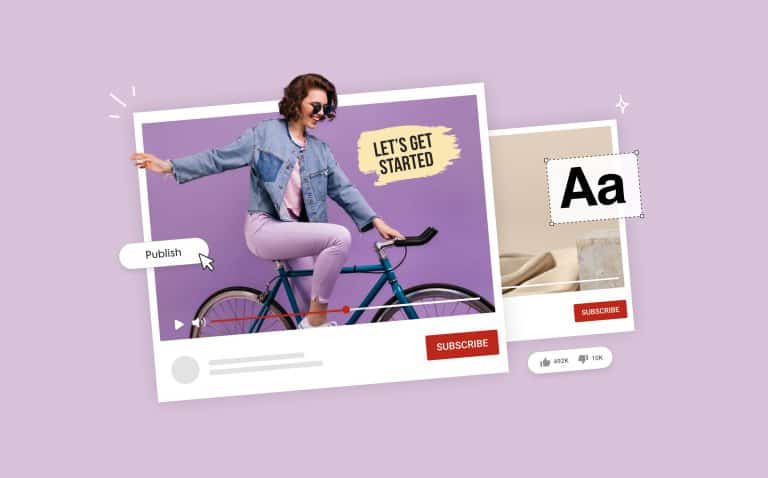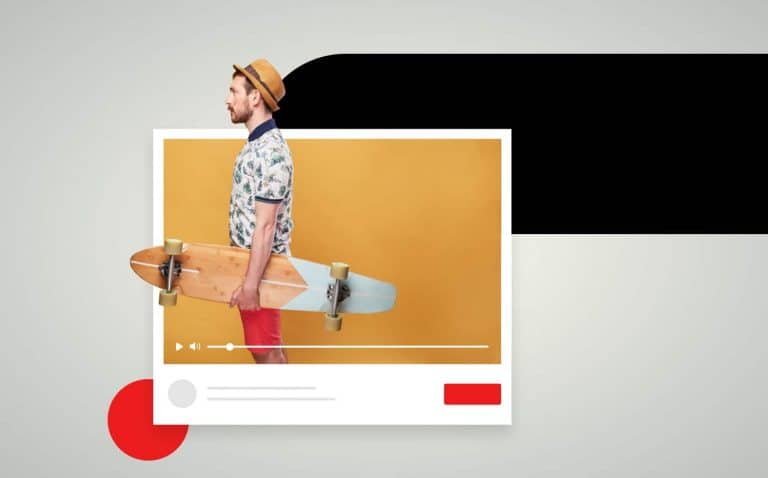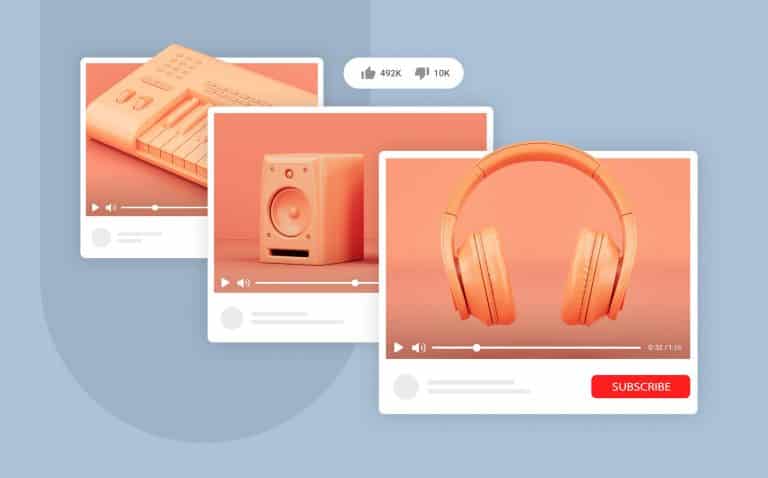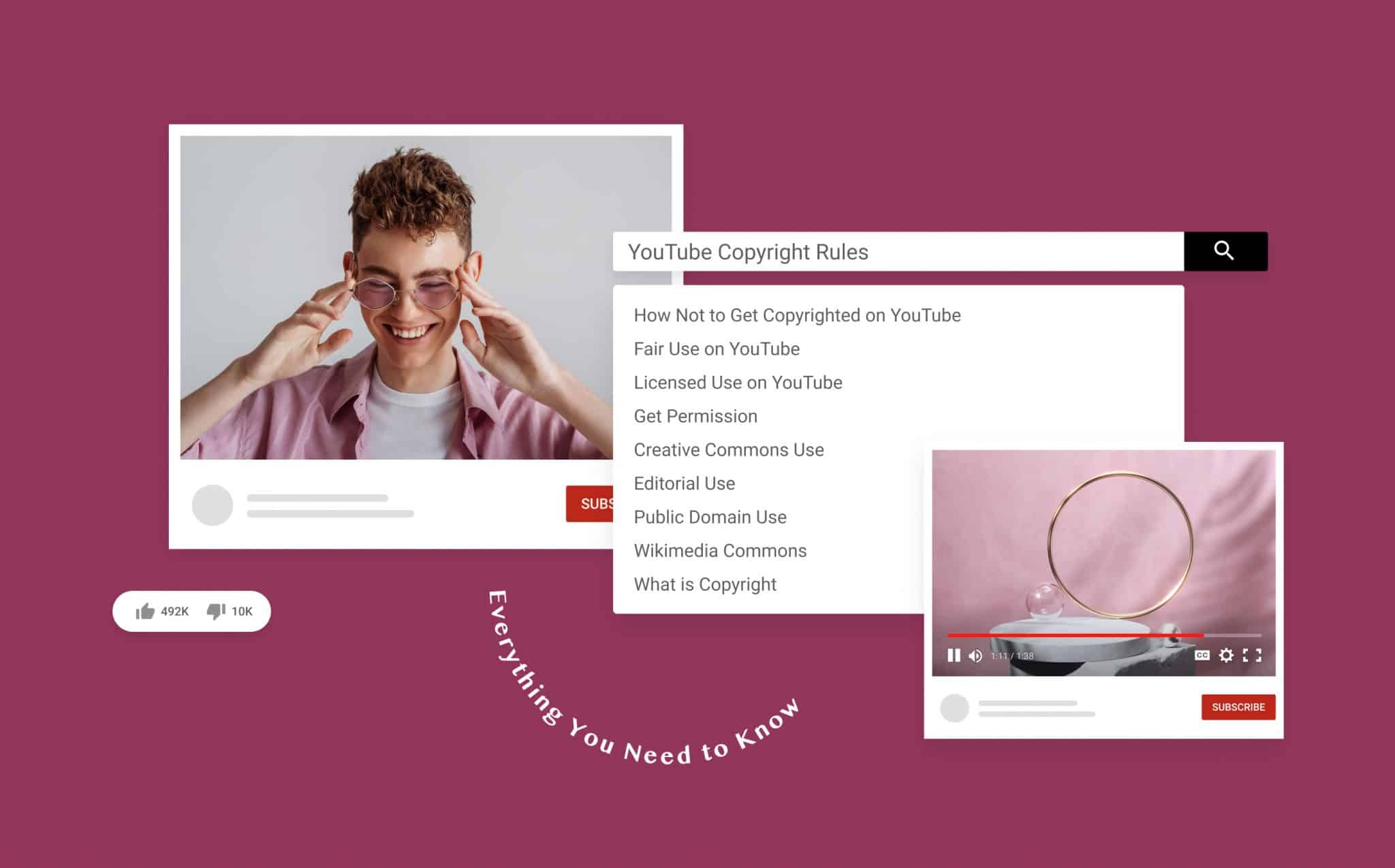
2024’s Complete Guide to YouTube Copyright Rules
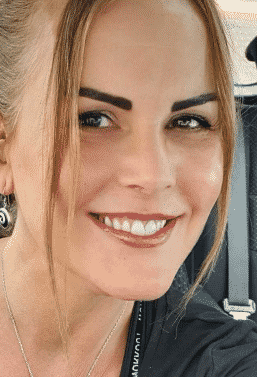
The last thing any YouTube channel creator wants is to get a notice that there has been a copyright claim on their account for a video that’s been uploaded to their channel. Luckily, by taking the time to learn about what you can—and can’t—do when creating YouTube videos for your channel, a strike can easily be avoided. We’ve rounded up the key YouTube copyright guidelines that can help you understand the YouTube copyright rules. We included what YouTube claims and strikes are and which copyright permission categories you can use.
This article provides a general overview of some issues you may face while dealing with copyright rules on YouTube. If you want to know how not to get copyrighted on YouTube or how copyright on YouTube is assigned, this article will help. However, please note that we are not giving legal advice; if you need more specific guidance, you should always check with a lawyer first.
What Is Copyright?
A copyright is an intellectual property right that protects creators of original content, work, or authorship. This includes songs, music, images, or artwork. Simply put, if you created or purchased the content, i.e. music, images, or artwork, then the copyright belongs to you. If someone else created the content or purchased the content then the copyright belongs to them. This can include almost any piece of content made in its original form, including intellectual property, images, or music.
Copyrights are immediate upon the creation of original content, but they can also be purchased. Currently, there isn’t a copyright renewal process. That means the copyright stays active as long as the creator is living—and even longer in some cases. A copyright holder has the right to determine under what conditions the copyrighted material may be used or shared by others. Copyrights should not be confused with licensing, such as legally using licensed, copyrighted music or images.
What Is YouTube Copyright Infringement?
YouTube copyright infringement is also known as a copyright violation; the two terms are used synonymously. This happens when you use copyrighted material that does not belong to you and does not legally fall under any other copyright use provisions, which we will discuss further down.
YouTube has a YouTube Rights Management Policy with a copyright detection system made of advanced automated algorithms, otherwise known as the “Content ID” management tool.
YouTube’s Content ID tool is a content management system with a copyright detection process that utilizes advanced algorithms. The Content ID management tool scans every uploaded video and runs comparison checks to evaluate similarities against other YouTube content, looking for video matches along with pictures and music. YouTube uses this tool to look for copyright violations.
YouTube Copyright Dos and Don’ts

YouTube’s first rule of copyright states: “Creators should only upload videos that they have made or that they’re authorized to use. That means they should not upload videos they didn’t make or use content in their videos that someone else owns the copyright to, such as music tracks, snippets of copyrighted programs, or videos made by other users, without necessary authorizations.”
Let’s look at a couple of the most common issues that come up with copyright on YouTube. Here is a quick highlight of the dos and don’ts.
Music Copyright Best Practices
Do:
- If you want to use music or lyrics from music that is copyrighted, then get permission from everyone who is a copyright holder for that specific song.
- Use audio tracks or music from licensed sources. You can use free sources like the YouTube audio library, video editor music libraries like Promo.com, or pay for licensing from sites like Audio Jungle.
- Use Creative Commons music. (To learn more about Creative Commons, see the section of this article called “Copyright Usage Permission Explained.”)
Don’t:
- Use any copyrighted music without explicit permission. If you are not sure, then it’s better not to chance it—find an alternative source for your music.
- Assume you can use lyrics without permission because you are not using the music. Lyrics are also copyrighted.
- Assume just because you only use a few seconds of any clip that it will “be ok.” You cannot use any copyrighted material, no matter the length, without permission.
- Think that if you give credit to the artist, you can use their copyrighted material. Again, unless you get specific permission, you cannot use it.
Footage Copyright Best Practices
Do:
- Get permission from everyone who is a copyright holder for each specific piece of content if you want to use images, videos, or artwork that is copyrighted.
- Use only your own original artwork, video footage, images, or content from websites that grant you a use license like Promo.com.
- Use Wikimedia Commons for images and artwork that offer a use license for free. (Further down, we explain more about Wikimedia Commons.)
- Use editorial footage for non-promotional videos that fall under the “editorial use” guidelines or any public domain images that are specifically listed. (For more information on editorial use, please read further down.)
Don’t:
- Use any copyrighted images, artwork, or videos that you don’t hold the copyright to without explicit permission. If you are not sure, it’s better not to chance it—find alternative images or artwork for your video.
- Copy or mimic any images or artwork in your videos. Even designs can be copyrighted.
- Think that if you give credit to the artist, you can use their copyrighted material. Again, unless you get specific permission, you cannot use it.
How Not to Get Copyrighted on YouTube: Licensing Options
In a nutshell, you should only upload content (including music, videos, and artwork) that you created or that you’re authorized to use. However, there are a few other ways you can upload copyrighted content without explicit permission from the copyright owner. Depending on the type of content and its purpose, you can sometimes use copyrighted content with different permissions. To avoid copyright issues on YouTube, use only content that falls under the following categories.
Fair Use on YouTube
Creators can sometimes decide to use copyrighted content if they deem that the purpose they are using it for falls under “fair use.” If you are using copyrighted content for the purposes of education, research, news reporting, or review, you might be able to use the content under fair use. You are responsible for determining this.
In order to use copyrighted material under fair use, there are very specific requirements. You must decide if the content falls under one of the “fair use categories.” Fair use is a legal concept that permits people to use copyrighted material for specific purposes without obtaining permission and without paying royalties.
YouTube does not decide what is considered “fair use”; only the local courts do. The general methods of using copyrighted material under fair use are general reviews, reporting news, educational purposes, scholarly research, or parody. Applying fair use to your video can be tricky, so definitely check out more about it.
Fair use permits the reuse of copyrighted material under specific circumstances without needing to acquire permission from the copyright holder. For example, for YouTube in the US, a creator may use copyrighted material for commentary, research, teaching, or in some cases, news reporting. However, the qualification of fair use is determined on a case-by-case basis from YouTube; additionally, different countries have different rules and laws.
There are many misconceptions surrounding what falls under fair use, among which is a notion that you can use anything you want as long as you don’t go beyond a specific time limit; however, it’s more complex than that.
Even if your use of copyrighted content is consistent with fair use, using a copy from an unapproved source invalidates the fair use provision. It’s highly recommended not to rely on this to avoid YouTube copyright issues.
Licensed Use
Most YouTube creators don’t have the ability to constantly film and produce original content. That is why an online royalty-free media library is one of the best investments any YouTube creator can invest in. This means that a YouTube channel creator can purchase a license to use the content from businesses that have pre-negotiated the copyrights. Promo, for example, offers over 110 million images and videos with lifetime licensing for YouTube projects. The audio library also offers over 1.5 thousand pre-approved music tracks, so anything you create on the platform is 100% worry-free.
Creative Commons Use
Creative Commons music is copyrighted music. The original artist grants permission for anyone to use their copyrighted music as long as you attribute the music to them in your content.
Wikimedia Commons
Wikimedia Commons is a media collection website for free-use images, sounds, and other media files as long as you properly attribute the artist’s work. It is a project of the Wikimedia Foundation.
Public Domain
Finally, there is what falls under “Public Domain.” This means just that—it belongs to the public.
Public Domain Music
In the US, a song or piece of music is automatically considered to be under the public domain if it was published before January 1, 1926. Otherwise, there are websites that offer royalty-free music that may be licensed for use. To understand how to know if a song is copyrighted, just look it up online. See if you can find the date. As a general rule, you can.
Public Domain Images
Please check out this link for some helpful information about public domain images. There are multiple ways to determine whether or not an image is under the public domain. Specifically for images, the most common ways to determine whether they are subject to the public domain are:
- The US government created the image.
- The image doesn’t have a copyright notice.
- The copyright has expired for the image.
- The image isn’t eligible for copyright protection
- The image has been donated or dedicated to the public domain.
A YouTube Copyright Claim vs. A YouTube Copyright Strike
When the YouTube Content ID system finds a video that matches your content with another channel’s, a YouTube copyright claim (also known as a Content ID claim) is created. A Content ID claim is the same as a copyright claim, and the terms are often used interchangeably. An important note: copyright claims do not result in copyright strikes.
What Is a YouTube Copyright Claim?
A copyright claim happens when a creator uses the material of other creators, whether on purpose or unwittingly. The copyright on YouTube often goes unnoticed; however, the YouTube copyright algorithms are getting more advanced.
Copyright claims are generally automated through the Content ID management system. The results typically include the content in question being tracked, blocked, or monetized for the copyright owner by YouTube. You can still use the content, but the owner can restrict the viewing of the video to specific countries or even earn revenue from your video.
What Is a YouTube Copyright Strike?
A copyright strike happens when the copyright owner makes a request to remove a video based on what is known as a DMCA strike. DMCA stands for the Digital Millennium Copyright Act. A Copyright Takedown request is submitted to YouTube manually. YouTube requires the copyright owner (that is, the one claiming that their content is being violated) to supply a detailed list of information regarding the content they want to protect.
For YouTube to comply with the DMCA policies, it must respond to copyright infringement claims with a notice to the channel and details of the takedown process. The consequence of this is that YouTube will remove the video from the channel—that is, until the dispute is resolved and the channel receives a copyright strike.
Copyright strikes adversely affect a YouTube channel, as the channel is then losing good standing with YouTube. Even if a channel creator removes the video in question, the strike remains on the account for 90 days.

What to Do If You Get a YouTube Copyright Claim or Strike
If you get a copyright claim on your channel, don’t panic too much; you can fix it, and the claims only last 90 days, so just be mindful not to keep using content that you can get copyright claims on. If the copyright owner doesn’t respond within 30 days, the claim on your video expires—in which case, you don’t need to do anything. However, if the copyright owner pursues the claim, you’ll get blocked or taken down. The simple solution is to remove the content in question in your video or prove that you have the copyright or legal licensing to use it.
Take any claims your channel receives seriously—you need to do something, or there will be consequences. YouTube takes breaches seriously too and will remove the infringing video. Check out this video by YouTube on how to resolve a YouTube copyright claim.
If you get a copyright strike, it means that a copyright owner submitted a legal takedown request for using their copyrighted content. When a YouTube user gets a copyright strike, they will be required to watch a warning video (aka YouTube Copyright School) that details copyright rules, then answer questions about the danger of copyright violations. There are three ways to resolve copyright strikes:
- Wait for the strike to expire: Copyright strikes expire after 90 days, and if it’s the channel’s first strike, YouTube requires the channel creator to complete YouTube’s Copyright School.
- Get a retraction: If you believe the claim has no basis and that you adhered to copyright rules properly, contact the person who filed the takedown request and ask them to retract their copyright infringement claim.
- Submit a counter-notification: Another option if you think your video was reported or removed by mistake is to submit a counter-notification. This also applies if you believe your video falls under fair use.
Stay Away from the Lifetime Ban
YouTube copyright strikes are not something to mess around with. If a channel gets one strike, the creator must go to Copyright School; then, after 90 days, it expires. If a channel receives another strike within the first strike’s 90 day timeline, the 90-day period starts over, and the same goes for the third strike.
However, if a channel receives a third strike before the first two have expired, YouTube terminates that creator’s YouTube channel. This includes all associated channels and removes all of their videos, prohibiting the creator from making any other YouTube channels. So basically, like baseball, three strikes and you’re out! But unlike baseball, it’s permanent—not only do you lose your content, but you get banned for life!
YouTube Copyright Best Practices
Use Original Content
In order to stay out of trouble, you should only upload content—whether it’s music, videos, or artwork—that you created or that you’re legally authorized to use. This includes derivative works of copyrighted material.
Get Permission to Use Copyrighted Material
If you create your own content, then the copyright belongs to you, but if you upload content created by someone else, then you don’t hold the copyright to the content; the originator does. Therefore, you must get their permission before you use it to avoid copyright claims or strikes unless you can prove the content falls under fair use.
Use Royalty-Free Footage, Images, and Licensed Music
When choosing music for your video, keep in mind that YouTube’s algorithms scan video uploads for copyright infringement to check them against the YouTube music copyright rules. Therefore, if you want to use a copyrighted track legally, you should get permission or potentially face legal action for using the content without permission or licensing. However, an amazing alternative is using what is known as royalty-free or pre-licensed music.
Royalty-free is a term used to describe music or images that you’re allowed to use without paying royalties. Adding royalty-free music to your video takes care of the legal liability and ensures a worry-free creative process because you comply with all the YouTube copyright infringement laws.
Similar to YouTube’s music copyright rules, the same policies apply to images. Basically, if the image idea is yours, and you created it with your equipment, the copyright belongs to you. If not, it’s better to consider an alternate source for your images or video footage that provides legal use.
A practical alternative to fussing over copyright issues or licensing with images is to consider using already licensed material in your video footage and images. So, whether you’re creating a branded YouTube banner, channel art, or a promotional video, it’s super easy to create some fabulous material with already-made templates and royalty-free images.
The best way to avoid all copyright infringement issues when you don’t own or have the images, music, or video footage you want for your video creation is to use pre-licensed material from various sources. As we have already covered, there are many ways to use copyrighted material through using services like stock photo providers and music licensing agencies. In many cases, you can find all three features within online video creation tools.
How You Can Use Promo.com to Avoid Copyright Strikes
Any YouTube channel creator understands the labor-intensive work that goes into making videos and maintaining a YouTube channel. However, as previously mentioned, some great online resources can help you protect yourself from copyright claims and strikes and even assist you in the process of your content creation.
Access 110M+ Photos and Videos
Out of all the video makers out there, Promo.com offers the most tremendous resource for YouTube channel creators. With Promo, you can enjoy unlimited use of 110M+ photos and videos from Getty Images and iStock. The easy-to-use editor allows for creating a YouTube video by merging several videos together from the library, mixing them with your own footage, and even adding photos. You can also pair each video you create with a YouTube intro made to match your style and brand in minutes.
Use Promo.com’s Pre-Licensed Music
Many times, channel creators have the footage but need the music. Promo.com offers over 1.5K royalty-free music tracks to Promo’s users included in every plan. You can choose from our music library using filters that include genre, mood, tempo, and instrument.
Learning how to add music to a video has never been easier. Often, the music will drive the overall message of your video when placed strategically in the footage. With Promo.com, you can accomplish this with just a few clicks and avoid the copyright infringement issues that are so prevalent on YouTube today. If you’ve done your research and have checked off all the boxes when ensuring you’re not infringing on copyrighted material – use our lyric video maker to create your own music lyric videos!
FAQ
What is the difference between “claimed videos” and “claims”?
A claim on a video is the declaration of asserting copyright ownership of a video, either through the Content ID management system or manually. A claimed video is the status of a video that has one or more claims on it.
How many seconds of copyrighted music can I use on YouTube?
Currently, there is no specified time that copyrighted music may be used without explicit permission from the copyright owner if the content does not fall legitimately under “fair use.” The only legal method to use music on YouTube is to obtain permission from the copyright holder.
What is the difference between “takedowns” and “claims”?
Copyright owners can manually submit a claim for unauthorized use of copyrighted material to YouTube. They can do this by either issuing a copyright takedown or claiming the video through Content ID. By submitting a takedown request, it begins the process of asserting a legal claim according to the law.
In Summary
Hopefully, you have a better idea of how to follow copyright rules on YouTube. YouTube’s algorithms are good at finding copyright infringement. Like with most budding technology, the algorithm is getting better and more effective. Consequently, it’s good practice for YouTube video creators to make sure all content is theirs or has the right licensing to stay out of YouTube’s copyright radar.
Thankfully, today, we have many resources online for YouTube channel creators to create just about anything. Video creation is significantly increasing as the primary form of communication for essential content and ideas. YouTube is a valuable platform to share those ideas. It provides a place for content creators to share their products, ideas, and voices globally.
If you loved this article, be sure to check out:
- An Introduction to YouTube AdSense
- The Ultimate Guide on How to Make YouTube Shorts
- How to Choose a YouTube Channel Name
Create 100% Worry-Free Videos
Use Promo.com's media and music library for your YouTube videos and never worry about licensing again! Over 110M+ licensed assets inside
About the author
KC Kinniburgh
KC Kinniburgh is a content manager at Promo. Her writing genre includes almost all aspects of the digital online industry, emphasizing the hi-tech sector. When she is not obsessing about proper punctuation or capitalization, she is learning about the E8 lattice or working out.
